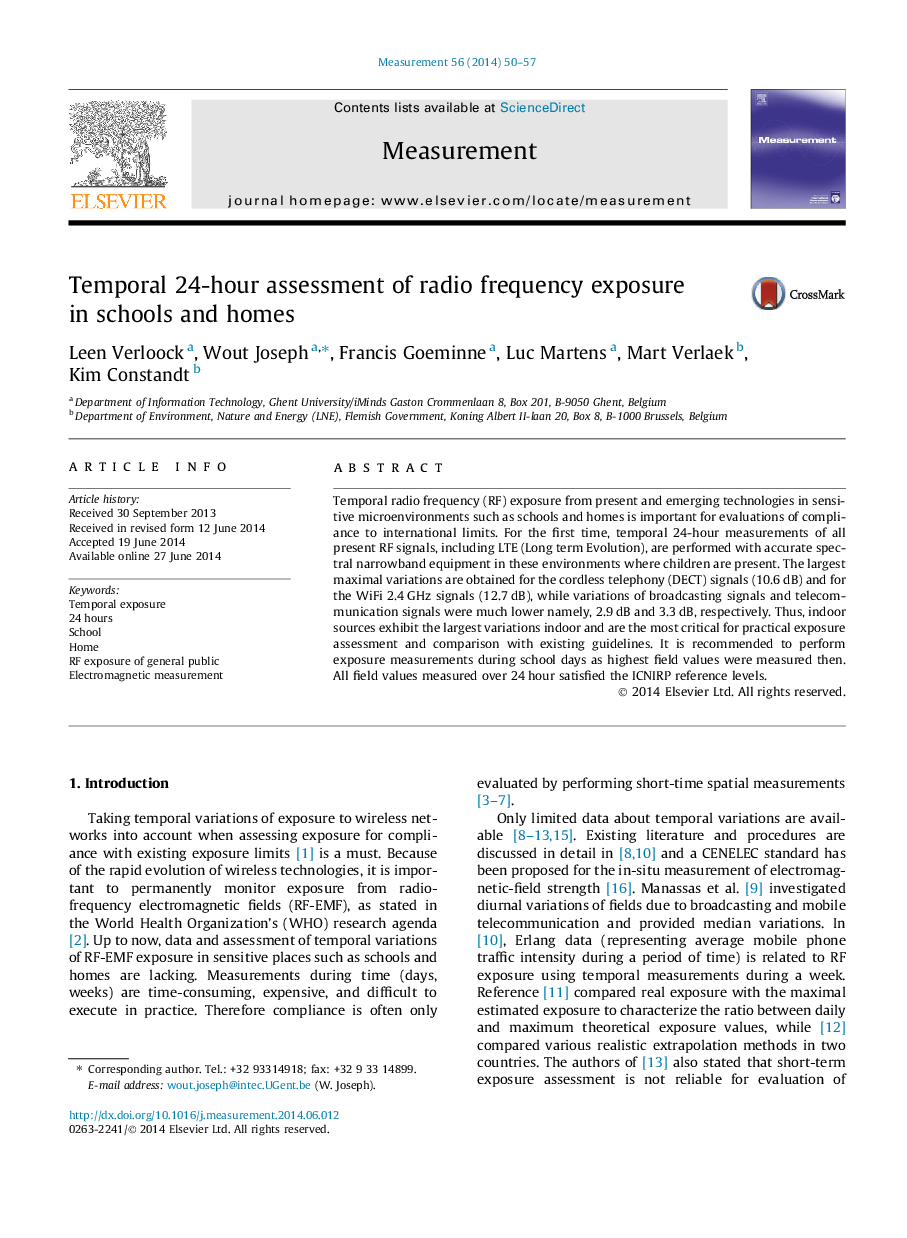| Article ID | Journal | Published Year | Pages | File Type |
|---|---|---|---|---|
| 730181 | Measurement | 2014 | 8 Pages |
•Temporal exposures during 24 hour are assessed in schools and homes.•All present RF signals are included in the analysis including LTE.•Signals from indoor sources DECT and WiFi have largest variations.•We determine for which periods of the day higher variations are possible.•The WiFi duty cycle (actual usage) is measured and characterized during 24 hour.
Temporal radio frequency (RF) exposure from present and emerging technologies in sensitive microenvironments such as schools and homes is important for evaluations of compliance to international limits. For the first time, temporal 24-hour measurements of all present RF signals, including LTE (Long term Evolution), are performed with accurate spectral narrowband equipment in these environments where children are present. The largest maximal variations are obtained for the cordless telephony (DECT) signals (10.6 dB) and for the WiFi 2.4 GHz signals (12.7 dB), while variations of broadcasting signals and telecommunication signals were much lower namely, 2.9 dB and 3.3 dB, respectively. Thus, indoor sources exhibit the largest variations indoor and are the most critical for practical exposure assessment and comparison with existing guidelines. It is recommended to perform exposure measurements during school days as highest field values were measured then. All field values measured over 24 hour satisfied the ICNIRP reference levels.
